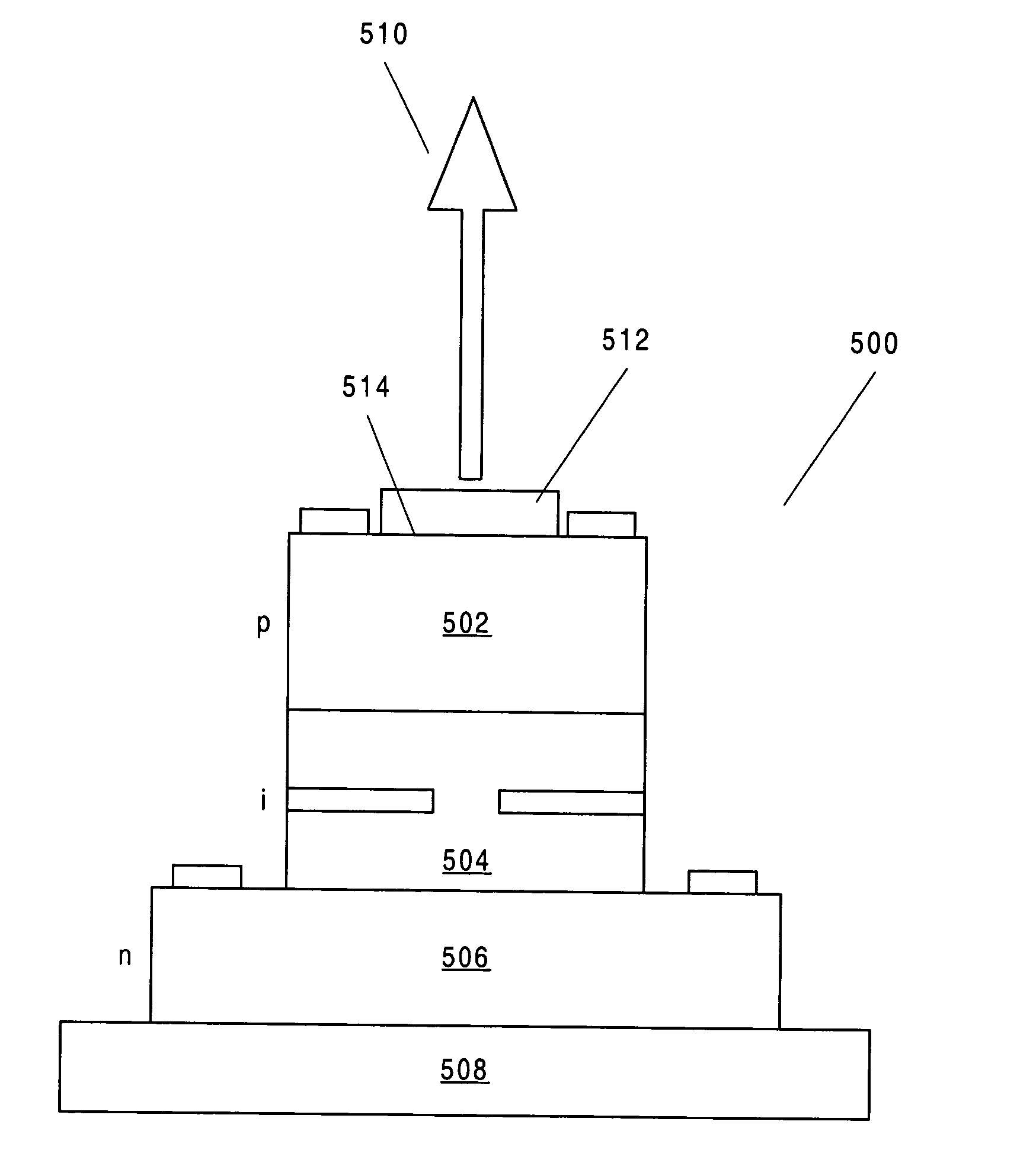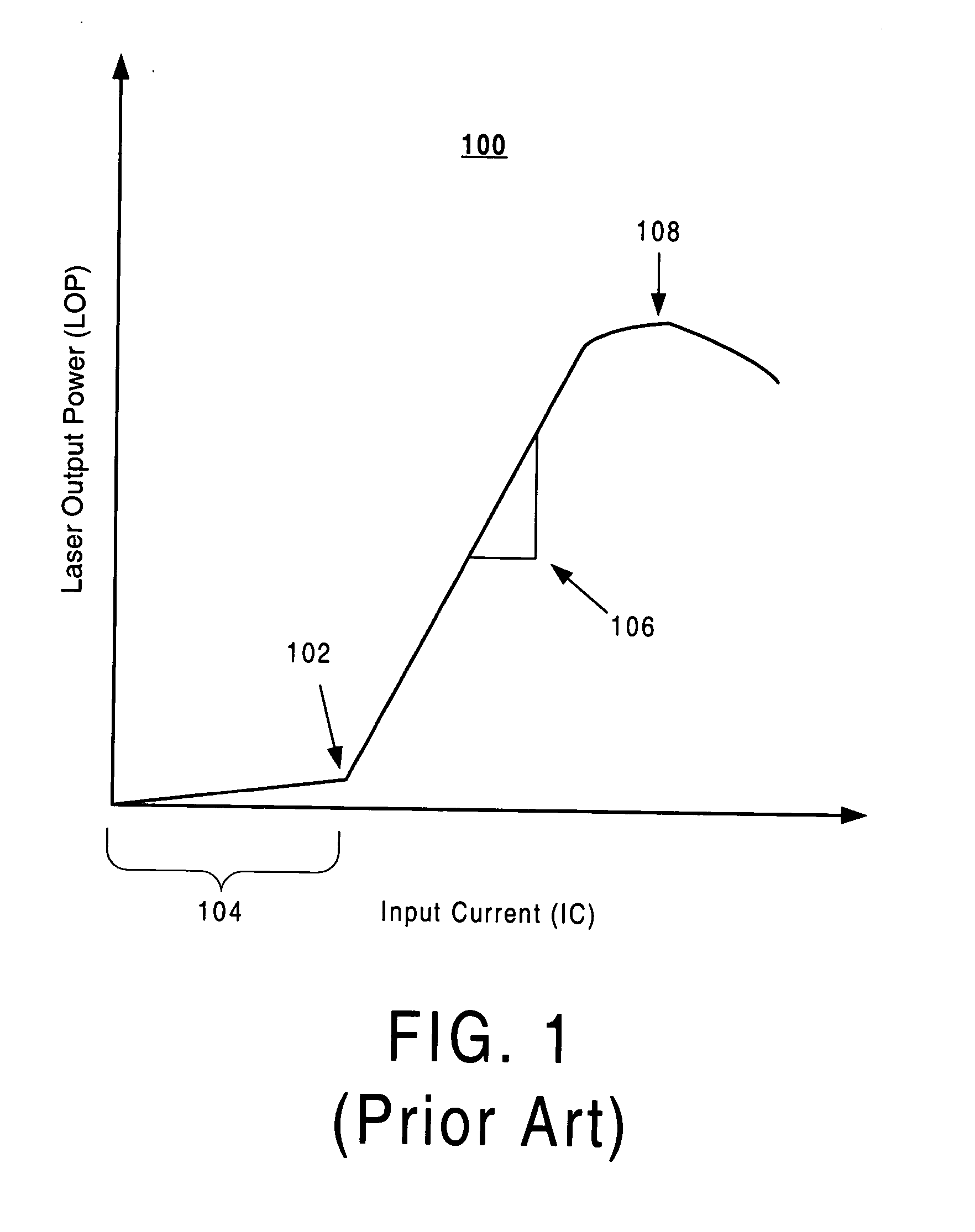Laser and detector device
- Summary
- Abstract
- Description
- Claims
- Application Information
AI Technical Summary
Benefits of technology
Problems solved by technology
Method used
Image
Examples
Embodiment Construction
[0038] Laser structures are very sensitive to their design and fabrication, and the laser designs presently in use have been optimized over many years to get adequate functionality. Thus, people seeking to use those lasers are reluctant to deviate from or alter those designs for fear of creating devices that do not work properly. Moreover, we have realized that such devices can be used without employing a structure that can interfere with the laser's output.
[0039] For ease of explanation herein, the side of the laser having the mirror with the lower reflectivity, which corresponds to the mirror through which the laser is intended to emit during operation is referred to as the “active” side. The side opposite the emission (i.e. active) side of the laser is referred to herein as the “passive side” of the laser and the mirror on that side is referred to as the passive side mirror.
[0040]FIG. 9 is a simple representation of a conventional bottom emitting VCSEL 900 comprising a pair of ...
PUM
 Login to View More
Login to View More Abstract
Description
Claims
Application Information
 Login to View More
Login to View More - R&D
- Intellectual Property
- Life Sciences
- Materials
- Tech Scout
- Unparalleled Data Quality
- Higher Quality Content
- 60% Fewer Hallucinations
Browse by: Latest US Patents, China's latest patents, Technical Efficacy Thesaurus, Application Domain, Technology Topic, Popular Technical Reports.
© 2025 PatSnap. All rights reserved.Legal|Privacy policy|Modern Slavery Act Transparency Statement|Sitemap|About US| Contact US: help@patsnap.com



